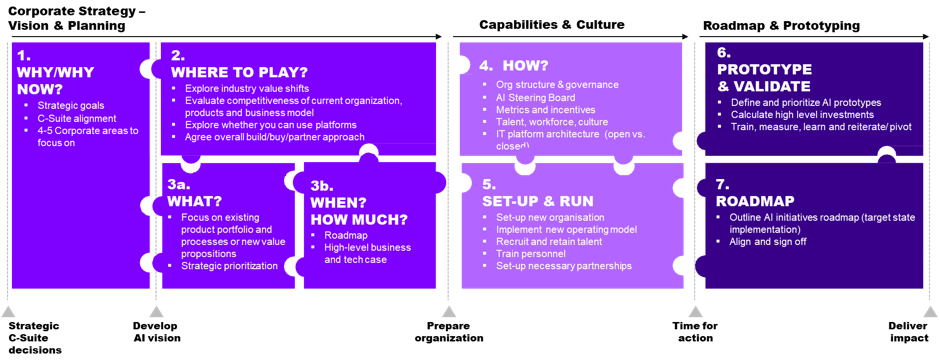5 Health Insurance Tips for Small Business
Here are five things for small businesses to consider before employees enter the open enrollment period for next year on Nov. 1.

Here are five things for small businesses to consider before employees enter the open enrollment period for next year on Nov. 1.

Get Involved
Our authors are what set Insurance Thought Leadership apart.
|
Partner with us
We’d love to talk to you about how we can improve your marketing ROI.
|

Sally Poblete has been a leader and innovator in the health care industry for over 20 years. She founded Wellthie in 2013 out of a deep passion for making health insurance more simple and approachable for consumers. She had a successful career leading product development at Anthem, one of the nation’s largest health insurance companies.
Understanding blackjack can overcome the bias to inaction, overreliance on gut instinct and tendency to judge based on outcomes, not odds.

Get Involved
Our authors are what set Insurance Thought Leadership apart.
|
Partner with us
We’d love to talk to you about how we can improve your marketing ROI.
|
A new measure of fitness and health, called Personal Activity Intelligence (PAI), has important implications for both life insurers and policyholders.

Get Involved
Our authors are what set Insurance Thought Leadership apart.
|
Partner with us
We’d love to talk to you about how we can improve your marketing ROI.
|
It’s best to buy security cameras, ask others to check up on the home and make sure there is enough insurance coverage.

It’s nice having a vacation home to escape to, especially when the summer rolls around. But because you probably spend more time at your primary home, keeping bad guys away from your cabin in the woods or your beachfront property can be tricky. Read on to learn more about steps you can take to protect your second home.
Bulk up security
According to recent statistics, about 30% of household burglaries in the U.S. happen when a thief enters a home through an unlocked door or window. Installing deadbolt locks and burglar alarms are some of the best ways to prevent theft. Buying a system that lets you monitor what’s happening is another way to keep people from breaking into your vacation home.
You can install cameras that send real-time video footage straight to your smartphone or tablet. We recommend putting one camera outdoors and another one in a strategic spot inside of your home. You can monitor the feeds yourself or opt for someone else to do it. Cameras can potentially keep burglars from attempting to enter your home.
You may also want to consider buying other smart devices, like leak detectors, smart lights and locks that can be controlled remotely no matter where you are.
Make connections in the community
Your vacation home may be a place you visit occasionally. But it’s important to make friends with your neighbors. If you find someone who lives in the community throughout the year, you could rely on them for information. If something happens to your vacation home, that person could be your point of contact.
Close-knit communities like to look out for each other and you don’t want to feel like you’re the odd one out. You might be surprised. A trusted friend or observant neighbor may know a lot about what happens when you’re not around. Let the person know when you’ll be in town and, more importantly, when you’ll be away. The person can keep an eye out for strange activity. Give the person your phone number and a spare set of keys so he or she can act quickly if something goes wrong.
See also: Smart Home = Smart Insurer!
In some areas around the country, you can also register for a house check. A police officer or registered volunteer can walk around the perimeter of your vacation home when you’re not in the area. Just keep in mind that, in some places, house checks can only be done for a period of up to 30 days per calendar year.
Bonus tip: You’ll also want to make your home look lived-in, even if you’re only there a few times a year. Thieves often look for easy targets like a home that’s unoccupied for weeks throughout the year.
Make sure you have enough insurance
If you plan to rent your vacation home to others, you may want to meet with an insurance professional. There are different risks associated with having a second home, and your standard homeowners policy may not cover damages that occur when someone is renting your home.
According to the Insurance Information Institute, you may need to purchase additional coverage. Letting family members or other guests spend a day or two in your vacation home may not be a big deal. But you should consider getting a business policy if you plan to regularly rent your home for a week or more at a time. For long-term rentals (meaning that someone is spending time in your vacation home for six months or more), you’ll need a landlord or rental dwelling policy.
Landlord policies cover physical damage to the structure of a second home, personal property and liability if someone gets hurt. In most cases, landlord policies also provide financial support if you can’t rent your property or make money while it’s being repaired after a covered loss. Just note that landlord policies generally cost about 25% more than the typical homeowners policy.
See also: When It’s Better to Build In-House
Before you go
Protecting your vacation home is important. Because you aren’t around as often, it’s best to buy security cameras, ask others to check up on your home and make sure you have enough insurance coverage. Before you leave the premises, double-check and make sure you’ve locked up all of your valuables. You don’t want to wait until it’s too late to make an effort to keep your second home safe.
Get Involved
Our authors are what set Insurance Thought Leadership apart.
|
Partner with us
We’d love to talk to you about how we can improve your marketing ROI.
|
There is quite a bit of buzz about the likelihood of a wave of M&A for insurance companies and about an intriguing maneuver that could let insurers free up capital.

While speaking this week at a PwC conference for members of the board of directors of financial services companies, I heard quite a bit of buzz about the likelihood of a wave of M&A for insurance companies and about an intriguing maneuver that could let insurers free up capital. Following the principle of Scott Van Pelt, who begins each broadcast on ESPN with "the best thing I saw today," I figured I should share.
The feeling about the need for consolidation was so strong that one person asked whether an insurer might hit the roughly 20% market share that Allianz has in Germany, getting so big that federal regulators would need to assert themselves and sideline the states.
The assumptions about consolidation began with the understanding that other industries tend to coalesce around a few giants, while there are thousands of players in the insurance industry, but the thinking went much further. There was a lot of talk about new FASB regulations that will tend to reward size.
In addition, if you believe, as I do, that every industry becomes a technology business over time, you have to assume that the insurance industry will show more of the winner-takes-all characteristics of the technology world, where there is one Google, one Apple, one Facebook and one Amazon. Once someone gets a digital platform right, it costs nothing to add more partners and customers, so competitors fall by the wayside, and many are more than happy to sell.
Even short of buying and selling companies, a PwC partner laid out an approach called Insurance Business Transfer (IBT) that is about to take effect in Oklahoma and that she thinks could spread across the country. The basic idea, which draws from a law in the U.K., is to transfer runoff business into a new entity and free up capital. Courts need to approve the transfer, but, crucially, approval from individual policy holders is not required. The law takes effect Nov. 1, and, if it withstands the inevitable legal challenges, could allow considerable restructuring even short of M&A. A much more limited form of the IBT approach exists in Connecticut, and a more modest form of the Connecticut law has been around in Pennsylvania since at least the 1990s.
Thanks to PwC for including me. It's always nice to find an excuse to get back to New York.
Have a great week.
Paul Carroll
Editor-in-Chief
Get Involved
Our authors are what set Insurance Thought Leadership apart.
|
Partner with us
We’d love to talk to you about how we can improve your marketing ROI.
|

Paul Carroll is the editor-in-chief of Insurance Thought Leadership.
He is also co-author of A Brief History of a Perfect Future: Inventing the Future We Can Proudly Leave Our Kids by 2050 and Billion Dollar Lessons: What You Can Learn From the Most Inexcusable Business Failures of the Last 25 Years and the author of a best-seller on IBM, published in 1993.
Carroll spent 17 years at the Wall Street Journal as an editor and reporter; he was nominated twice for the Pulitzer Prize. He later was a finalist for a National Magazine Award.
Customer care powered by artificial intelligence gives insurers the opportunity to save 30% of their service costs.

How can insurers meet increased customer expectations at a lower cost? AI-powered care delivers on a future vision of customer service with an opportunity for savings of 30% by, for example, driving customers to digital experiences. In this post, I will explore how to apply AI using an intelligent customer engagement (ICE) framework.
How can your insurance company increase its artificial intelligence quotient (AIQ) with a balanced innovation strategy? In this blog series, I’m exploring the myriad ways in which AI adds value to financial services in general and the insurance value chain in particular. In my previous post, I defined the term AIQ and revealed and discussed three key ingredients to building a strong AIQ: technology, data and people. In this post, I’ll take a close look at one of the key areas in the insurance value chain—sales and distribution—and explain how AI-related technologies can add value to this function. But first, I want to reiterate the value of AI and why it’s important to transform your business into an AI business. Why a strong AIQ is vital for your business—and why you need a strategy first. Most of what’s written about AI relates to cost-cutting and job losses, but as we saw with the example given with regard to the health industry in the previous post, AI is a much more optimistic story. Its greatest benefits are not only efficiency and productivity but innovation, improved customer and employee experiences and the development of new sources of value and growth, especially when they augment human capabilities. However, to gain these benefits and to identify relevant use cases, it is necessary to develop a cross-enterprise AI strategy that clarifies the strategic goals: the whys, the hows and the whats of the business model leveraging our “AI strategic approach,” as outlined below. See also: 3 Steps to Demystify Artificial Intelligence
Once the strategic goals have been clarified, the potential use cases for AI can be identified and prioritized according to the impact and estimated implementation effort they have on supporting the achievement of these goals (such as enhanced operational efficiency or improved customer experience) along the insurance value chain:
See also: 3 Steps to Demystify Artificial Intelligence
Once the strategic goals have been clarified, the potential use cases for AI can be identified and prioritized according to the impact and estimated implementation effort they have on supporting the achievement of these goals (such as enhanced operational efficiency or improved customer experience) along the insurance value chain:
 How can insurers use AI in sales and distribution?
As mentioned in my previous post, there are numerous use cases of AI that can be applied along the insurance value chain. In this post, we focus on AI in marketing, sales and distribution, including:
How can insurers use AI in sales and distribution?
As mentioned in my previous post, there are numerous use cases of AI that can be applied along the insurance value chain. In this post, we focus on AI in marketing, sales and distribution, including:
 It’s time to put your AIQ to work
When you combine human ingenuity with AI—such as data analytics, virtual assistance and machine learning—to improve the sales and distribution function, you will see results improving.
AI presents the opportunity for business transformation by enabling intelligent processes in the value chain and intelligent products and services in the market. Success will depend on how well your organization can harness the combined power of technology, data and people.
In my next post, I’ll look at how you can use AI to augment underwriting and service management. Get in touch to find out how you can boost your company’s sales and distribution function, as well as others within the insurance value chain, or download our report on How to boost your AIQ.
It’s time to put your AIQ to work
When you combine human ingenuity with AI—such as data analytics, virtual assistance and machine learning—to improve the sales and distribution function, you will see results improving.
AI presents the opportunity for business transformation by enabling intelligent processes in the value chain and intelligent products and services in the market. Success will depend on how well your organization can harness the combined power of technology, data and people.
In my next post, I’ll look at how you can use AI to augment underwriting and service management. Get in touch to find out how you can boost your company’s sales and distribution function, as well as others within the insurance value chain, or download our report on How to boost your AIQ.
Get Involved
Our authors are what set Insurance Thought Leadership apart.
|
Partner with us
We’d love to talk to you about how we can improve your marketing ROI.
|
There’s little doubt in a CEO’s mind that AI will redefine the competitive landscape in the years to come. Those with a strategic approach will thrive.

Get Involved
Our authors are what set Insurance Thought Leadership apart.
|
Partner with us
We’d love to talk to you about how we can improve your marketing ROI.
|
Learn the lessons from every prior earthquake to have the best chance of surviving the next disaster uninjured and quickly on the way to recovery.

Get Involved
Our authors are what set Insurance Thought Leadership apart.
|
Partner with us
We’d love to talk to you about how we can improve your marketing ROI.
|

Eric Preston is vice president, loss control services, for Keenan, an industry-leading California insurance brokerage and consulting firm for healthcare organizations and public agencies.
Some of the best concepts, opportunities and solutions find the exit sign faster than they find traction within firms.

Get Involved
Our authors are what set Insurance Thought Leadership apart.
|
Partner with us
We’d love to talk to you about how we can improve your marketing ROI.
|

Matteo Carbone is founder and director of the Connected Insurance Observatory and a global insurtech thought leader. He is an author and public speaker who is internationally recognized as an insurance industry strategist with a specialization in innovation.
For insurers, digital technology offers new ways to manage risk that relies less on face-to-face and traditional clinical assessment.

Get Involved
Our authors are what set Insurance Thought Leadership apart.
|
Partner with us
We’d love to talk to you about how we can improve your marketing ROI.
|

Ross Campbell is chief underwriter, research and development, based in Gen Re’s London office.